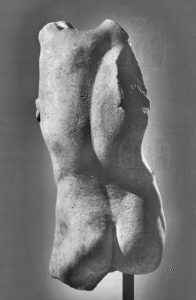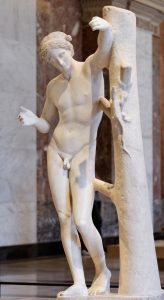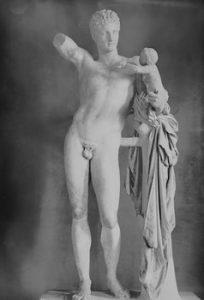Longing for what we have lost 4.2


Winckelmann and the beauty of male friendship
Androgynous beauty
Winckelmann’s appreciation of beauty was not confined to the masculine form. He praises female figures such as in the Niobe group and finds great beauty in the Apollo Sauroktonos, a statue with a young boy’s face and a softly contoured torso tending towards the feminine.
This ideal consists in the incorporation of the forms of prolonged youth in the female sex with the masculine forms of a beautiful young man…For to some of these the ancients gave both sexes, blended with a mystic significance in one.[1]

Winckelmann saw the beauty of such forms as consisting in the equilibrium of masculine and feminine. He calls this androgynous beauty the “middle form” and finds it also in depictions of other youthful male gods, such as Hermes and Bacchus.
[1] Winckelmann 1764, 122 (History of ancient art)
→4.3. Winckelmann and desire
